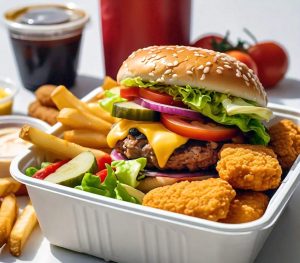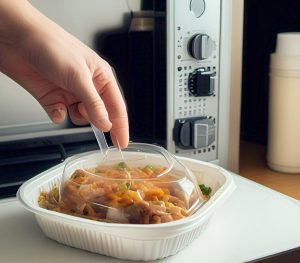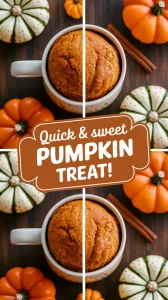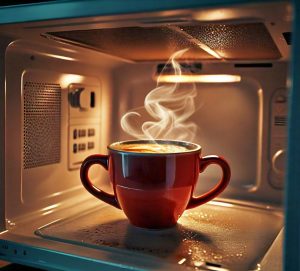Plastic to-go containers are plastic containers that restaurants and food vendors often use to package take-out or leftover food.
The question at hand is whether these can be safely microwaved or not.
This article will delve into the specifics of plastic to-go containers – their typical make-up, any potential hazards associated with microwaving them, and precise details on whether they can endure the heat of a microwave without compromising the food’s safety or taste. If it’s revealed that these containers cannot be microwaved, we’ll present viable alternatives for reheating your leftovers. We’ll also share tips and precautions when using such containers in a microwave (if applicable). FAQs about plastic to-go containers and our final thoughts on this topic will conclude this comprehensive guide.

Jump To:
Can You Microwave Plastic To-Go Containers?
Yes, you can microwave plastic to-go containers, but only if they are labeled as microwave-safe. This information is usually imprinted on the bottom of the container. However, not all plastic containers possess this attribute; some might release harmful chemicals when heated in a microwave. Hence, it’s crucial to check each container for its microwavability before usage. If there’s no indication of being microwave-safe on your takeout or leftover box, it is advisable to transfer your food into a glass or ceramic dish that is known to be safe for microwaving.
Facts About Microwaving Plastic To-Go Containers
Here, we will discuss the important things to note about microwaving plastic to-go containers.
- Heat Resistance: The ability of a container to withstand microwave heat varies based on its material composition.
- Microwave Safe Label: Containers labeled as “microwave safe” are tested for safety and have been found not to leach chemicals into food during microwaving.
- Type of Plastic: Certain types of plastic can release harmful chemicals when heated. Polystyrene (styrofoam), PVC (polyvinyl chloride), and colored or recycled plastics should be avoided in microwaves.
- BPA Content: Bisphenol A (BPA) is a chemical that can leach from containers into food during microwaving. It’s advisable to use BPA-free plastics if possible.
- Durability: Durable containers are less likely to warp or crack in the microwave, reducing the chance of leakage or contamination.
In conclusion, while it may be convenient at times, it’s essential you pay attention before microwaving your takeout in those plastic containers!
Now that we’ve covered these key points, let’s delve deeper into other aspects of safely using your microwave with different kinds of kitchenware.
Check out if you can microwave Panda Express styrofoam.
How Long Can You Microwave Plastic To-Go Containers?
You should only microwave plastic to-go containers for short durations, generally no longer than one minute. Extensive periods of microwaving can potentially cause these containers to warp or melt due to the high heat produced by the appliance. As a rule of thumb, it’s essential always to check whether the container has a ‘microwave-safe’ label before use as safety standards may vary amongst different brands and types.
Does Heating Plastic To-Go Containers in a Microwave Damage Them? Does Heating Food with Plastic Affect the Food?
Microwaving often damages non-microwave-friendly plastics leading to warping or melting over time. Furthermore, when heated, some plastics may leach harmful chemicals into your food which could be detrimental to health. Thus, ensuring that your container is labeled “microwave safe” guarantees its suitability for such use and ensures that your meals remain uncontaminated during the brief heating process.
Check out if you can microwave Styrofoam take out containers.
Does Heating Plastic in a Microwave Affect Flavor?
The impact on flavors largely depends on the quality and type of plastic being used. For instance, low-quality plastics might alter flavor due to chemical reactions between food and melted particles after extensive exposure in microwaves, while better-quality or “Microwave Safe” variants maintain their integrity under high heat conditions preserving both nutrients and taste.
In conclusion, we have discussed various aspects of using a microwave for plastic to-go containers, focusing primarily on the duration of microwaving them; potential damage caused during this process along any resulting effects on our edibles.
Now, let’s move on to discussing some frequently asked questions related to this topic.

Frequently Asked Questions (FAQs)
In this section, we will now look at the most commonly asked questions related to microwaving and heating in plastic to-go containers.
Can you microwave plastic to-go containers?
The answer depends on the type of plastic used in the containers. Some plastics can withstand microwave heat while others cannot. Generally, if a container is labeled as “microwave safe,” it means it’s resistant to melting and warping at high temperatures. Always check for this label before microwaving any plastic container.
Does microwaving plastic release harmful chemicals?
Yes, certain types of plastics when heated in a microwave might release harmful chemicals such as BPA or phthalates into food items. However, ‘microwave-safe’ plastics are manufactured keeping these health hazards into consideration and do not release harmful substances under normal heating conditions.
What happens if you microwave non-microwaveable plastic?
If non-microwaveable plastic is subjected to microwave heat, it may melt or warp due to its inability to withstand high temperatures. Apart from damaging the container itself, this could potentially contaminate your food with toxic materials released from the heated plastic.
How can you determine if a plastic container is safe for the microwave?
A quick way to determine whether a plastic container is safe for microwave use is by checking for an indication or symbol on its bottom which represents that it’s ‘Microwave Safe’. When unsure about the symbols or labels on your containers consult with manufacturers’ guidelines.
We hope these frequently asked questions have provided some clarity about using plastic containers in microwaves.
Check out if you can put freezer paper in the microwave.
Final Word
Microwaving food with some sort of plastic is a common practice worldwide. However, it’s crucial to ensure the safety of these containers before subjecting them to microwave heat. Always look for “microwave safe” labels on your plastic containers or consult with the manufacturers’ guidelines provided. This will prevent any health hazards arising from the possible release of harmful materials during heating.



